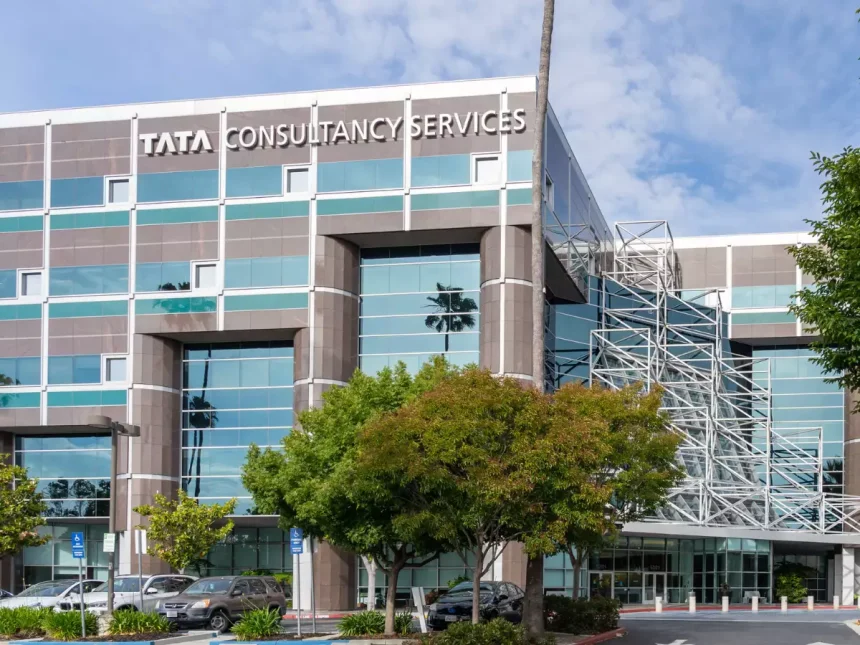Mumbai, India – In its latest compensation review, Tata Consultancy Services (TCS) has disbursed quarterly variable pay to employees, with 70% of its workforce receiving the full 100% payout. However, the remaining 30% have been granted reduced amounts, reflecting the company’s performance-based compensation strategy amid evolving market conditions.
Detailed Breakdown of TCS Variable Pay Structure

TCS’s variable compensation model remains one of the most structured in the IT sector, with payouts determined by multiple factors:
1. Performance-Based Allocation
- Top Performers (70% employees)
- Received 100% of variable pay
- Includes high-rated employees in billable projects
- Digital transformation teams (AI/ML, Cloud, IoT) favored
- Mid-Level Performers (20% employees)
- Granted 50-90% variable pay
- Typically includes employees meeting baseline targets
- Some bench resources affected by lower utilization
- Low Performers (10% employees)
- Received below 50% or no payout
- Includes non-billable staff and underperforming units
2. Business Unit-Specific Variations
- High-Growth Verticals (Cloud, Cybersecurity, AI)
- Nearly 85-90% employees received full payouts
- Reflects strong demand in digital services
- Traditional Service Lines (Legacy IT Support, BPO)
- Only 60-65% employees secured 100% payout
- Impacted by slowing growth in legacy projects
Why Did Some Employees Receive Lower Payouts?
1. Utilization Rates & Bench Strength
- Employees on the bench or with low project utilization saw deductions.
- TCS has been optimizing workforce deployment to improve margins.
2. Company-Wide Cost Optimization
- Despite steady revenue, TCS is controlling operational costs amid global economic uncertainty.
- Variable pay adjustments help maintain profitability without base salary cuts.
3. Individual Performance Metrics
- Employees with lower appraisal ratings (C or D grades) faced reductions.
- High performers (A/B band) were prioritized for full payouts.
Employee Sentiment & Industry Comparison
Employee Reactions
✅ Top Performers: Satisfied with full payouts, reinforcing retention.
⚠️ Mid-Level Staff: Mixed reactions; some expected higher payouts.
❌ Low Performers: Frustration over reduced earnings amid inflation.
How Does TCS Compare to Competitors?
| Company | % Employees Receiving 100% Payout | Key Notes |
|---|---|---|
| TCS | 70% | Strong in digital projects |
| Infosys | 65-70% | Similar structure, slightly lower |
| Wipro | 60-65% | Higher deductions in some units |
| HCL Tech | 75-80% | More generous in recent cycles |
TCS Financial Health & Future Outlook

Recent Performance Highlights
- Revenue Growth: 4% YoY in last quarter
- Large Deals: Signed $8.1B in new contracts
- Attrition Rate: Dropped to 13.3% (from 21.5% last year)
Hiring & Skill Demand
- Active recruitment in:
- AI & Machine Learning
- Cloud Computing (AWS, Azure, GCP)
- Cybersecurity & Data Analytics
- Focus on utilization: Bench employees encouraged to upskill.
READ MORE-Top Financial Changes in May: ATM Fees Up, Home Loan Rates Down, and ITR Filing Tips
What’s Next for TCS Employees?
1. Upcoming Appraisal Cycle (April)
- Potential salary revisions for high-demand skills.
- More emphasis on performance-linked bonuses.
2. Variable Pay Trends in 2024
- If market conditions improve, payouts may increase.
- Continued focus on differentiated rewards for top talent.
3. Long-Term Compensation Strategy
- TCS may introduce more stock options for senior staff.
- Increased training programs to improve billability.
Expert Opinion
“TCS is setting a benchmark in performance-driven payouts. While top performers benefit, others must align with business priorities to secure better payouts.”
– Rajesh Nahar, IT Sector Analyst, Economic Times
Key Takeaways for Employees
✔ High ratings = Full payouts (Focus on billable projects)
✔ Digital skills = Better rewards (AI, Cloud, Cybersecurity)
✔ Bench employees must upskill (Higher utilization needed)
Also Read:
Follow Us for More Updates
📩 Subscribe for latest IT salary trends
🔔 Turn on notifications for real-time updates
Final Thoughts
TCS continues to balance employee rewards with cost efficiency, making variable pay a critical differentiator. While 70% enjoy full benefits, others must align with organizational goals to secure better payouts in future cycles.
Would you like any further refinements, such as employee testimonials or region-specific data?










